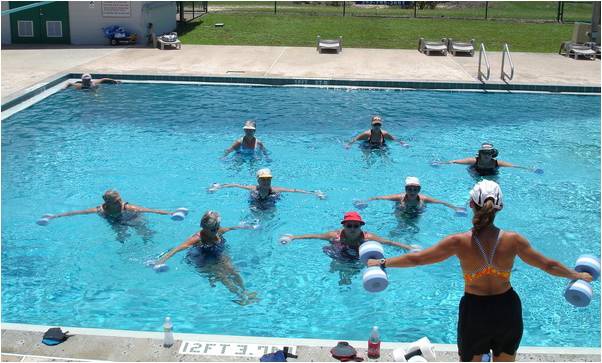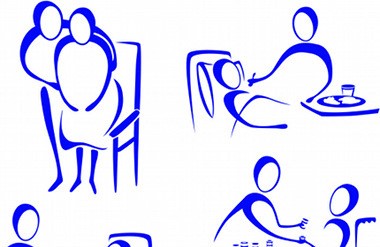I’m a borderline case, what can I expect ?

Have you been diagnosed with borderline high blood sugar levels? In your case the blood sugar levels recorded are higher than normal, but not high enough to be full-fledged Diabetes. This is referred to as the Prediabetes stage which can be reversed by following recommended guidelines.
During this phase, your pancreatic cells are still producing a little amount of insulin to convert carbohydrates into sugar, however, Insulin produced by the pancreas is not sufficient to remove sugars effectively, keeping the blood glucose level high.
It has been observed that people with Prediabetes may not take this condition seriously. However, research suggests that the sooner one begins to take precautions, the better are the chances of reversal of this condition.
Some quick tips
- Make small changes and be a winner!
- Prediabetes can eventually lead to Type 2 Diabetes; however, this development can be easily prevented. It requires small efforts and minor changes in your lifestyle. Research shows that reducing your body weight by just 5 -10 %, to begin with, makes a remarkable difference in the natural Insulin production in the body. Weight loss can also delay the onset of Type 2 Diabetes significantly.
- Watch your portion sizes
- Dieticians round the globe suggest having 3 main meals and 3 mini meals to have a good control of your glucose levels.
You may choose to use smaller plates for meals to check on serving portions to begin with. The plate method advocated by ADA is specially designed for people living with Diabetes or Prediabetes. This approach advises that you fill half of your plate with fibrous fruits and vegetables; one quarter with low carbohydrates, such as brown rice or a baked potato; and the last quarter should be lean protein, like grilled fish or chicken.
- Dieticians round the globe suggest having 3 main meals and 3 mini meals to have a good control of your glucose levels.
- Never skip meals
- Eat regularly. It is always a good idea to follow a regular meal pattern and not skip meals. People who eat regular meals, beginning with healthy breakfast, are healthier, more energetic and weigh less than those who skip meals.
Consume mini meals. Eating healthy mini meals and snacks such as fruits, multigrain bars and low-calorie preparations help you to not only control your blood sugar, but also hunger pangs and prevents you from overeating and binging.
- Eat regularly. It is always a good idea to follow a regular meal pattern and not skip meals. People who eat regular meals, beginning with healthy breakfast, are healthier, more energetic and weigh less than those who skip meals.
- Limit tobacco and alcohol consumption
- Research suggests smoking may aggravate complications from Diabetes, such as heart diseases and may lead to nerve and kidney damage. It is, therefore, highly advisable to significantly limit or give up on smoking.
Alcohol consumption can have a strong impact on your blood sugar levels; they often spike blood glucose levels leading to poor diabetes management. It is a good idea to take your doctor’s advice on whether you can consume alcohol, and how much. In any case, please remember to always eat a snack or a meal while consuming alcohol to prevent fluctuations or spiking of blood glucose levels.
- Research suggests smoking may aggravate complications from Diabetes, such as heart diseases and may lead to nerve and kidney damage. It is, therefore, highly advisable to significantly limit or give up on smoking.
- Exercise
- Exercise is integral to a healthy lifestyle. If you have been diagnosed with Prediabetes, it is even more essential for you to have a fitness routine.
It is a good idea to check with your doctor before you starting any exercise program. However, a daily walk of 30 – 45 minutes usually makes a good starting point. You may also choose from a wide variety of exercise regimes such as Yoga, Pilates, Tai chi, Swimming, Dancing and Jogging.
- Exercise is integral to a healthy lifestyle. If you have been diagnosed with Prediabetes, it is even more essential for you to have a fitness routine.
- Acquire as much information as you can
- It is believed an informed person can make better decisions. Hence we urge you to make an effort to learn about food and lifestyle changes that will help you manage your condition better.
- Take help and support from your family
- Research suggests that it is easier to manage Diabetes more effectively with family support. Your partner, family, and friends can play a huge role in motivating you and helping you adhere to your diabetes management programme.
It is a good idea to check with your doctor before you starting any exercise program. However, a daily walk of 30 – 45 minutes usually makes a good starting point. You may also choose from a wide variety of exercise regimes such as Yoga, Pilates, Tai chi, Swimming, Dancing and Jogging.
- Research suggests that it is easier to manage Diabetes more effectively with family support. Your partner, family, and friends can play a huge role in motivating you and helping you adhere to your diabetes management programme.
- Last but not the least
- Always maintain a positive approach. Studies suggest that people who consider Prediabetes as a burden or stress are often unsuccessful in managing this condition. Hence, with a positive mind and attitude you can successfully control your blood glucose levels and come on top of your condition.
What I can do as family/friend of a diagnosed Prediabetes?
Studies reveal that a majority of partners and family members may be equally worried upon detection of their partner’s Prediabetes/Borderline condition. But the good news is that you and your family can play a very important role in arresting and reversing the condition. Research suggests, Partners and family members who actively take interest in managing Prediabetes/borderline condition with in their spouses have been very successful in achieving excellent results.
You may already know that Prediabetes is a warning condition, but studies are on our side saying the condition can be reversed by bringing in lifestyle changes and following low carb diets, exercise regimes and incorporating lifestyle changes.
- Equip yourself first
- Reading and collecting information on diabetes yourself can be very helpful for you to understand what your partner is going through physically and emotionally. You may also choose to take guidance from a certified diabetic educator or a physician to help your partner in the best possible ways.
- Support your partner mentally and emotionally
- Psychologists suggest that people living with Prediabetes/Diabetes undergo tremendous emotional turmoil. Feelings such as anxiety, fear, guilt, anger, frustration and denial are bound to be experienced. As a family member / partner you should try to be supporting and understanding of these emotional ups and downs. You are also advised to consult a certified diabetic educator to help you motivate your partner in dealing with this condition.
- Participate in arresting Prediabetes/borderline condition
- It is always easier to approach a challenge as two people rather than one. By working together not only are you motivating yourself but you are also acting as a check for the other person. Planning goals together is very helpful in attaining successful results, it is a good idea to discuss and chalk out plans mutually before starting to follow any regime for management of this condition. Research suggests that partners, who ate the same food, and did combine exercises yielded better results than self-managed programmes.
Reminding your partner to adhere to the Prediabetes management programme may help in controlling high glucose levels in people with Borderline conditions. You may also choose to follow “eating by the plate method” advocated by ADA and try various diets.
However, it is important to beware that constant nagging, complaining or forcing may backfire in managing this condition. It’s advisable to set realistic goals, and handle situations compassionately.
- It is always easier to approach a challenge as two people rather than one. By working together not only are you motivating yourself but you are also acting as a check for the other person. Planning goals together is very helpful in attaining successful results, it is a good idea to discuss and chalk out plans mutually before starting to follow any regime for management of this condition. Research suggests that partners, who ate the same food, and did combine exercises yielded better results than self-managed programmes.
- Empower and replenish yourself
- Research shows family and partners undergo tremendous mental and physical fatigue. Remember to take care of yourself too, because you may also undergo mental and physical stress while looking after your companion.
Ensure that you have time for yourself and for pursuing the interests you enjoyed before Diabetes made an appearance in your life. Pamper yourself and remain cheerful.
It is important to strike a balance in order to manage your personal and professional life. Set realistic goals and do not give up. Eat a well-balanced healthy diet and learn different ways to cope up with stress. To know more read the below tips to manage compassion.
- Research shows family and partners undergo tremendous mental and physical fatigue. Remember to take care of yourself too, because you may also undergo mental and physical stress while looking after your companion.
To read more on Diabetes, click on the link below.


















